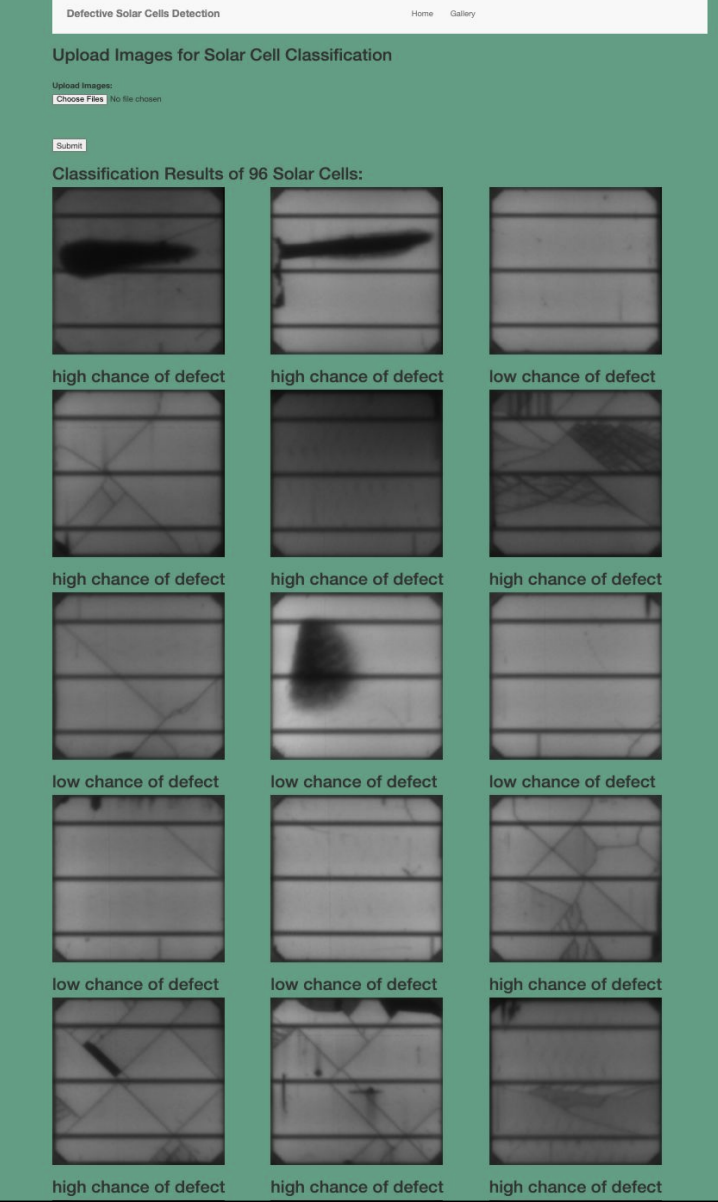User-Friendly Defective Solar Cell Detection
A Machine Learning-Based Django Web Application
Over time, solar panels can degrade. Replacing their solar cells keeps the panels effective. This project is a machine learning model with the ability to detect defective solar cells in solar panels on a Django platform to obtain rapid predictions. I started working on this after I completed the PyART research and used the same methods to deduce an effective model. I created the model by training over 2,500 solar cell images classified as "defective" or "not defective." I trained them with six different ML models: naive bayes, random forest, MLP, CNN, SVM, and decision trees. I tested each model on the untrained images to guage the level of accuracy. Based on the one with the highest accuracy (Random Forest) I programmed the model into my Django application. And voila!
I submitted this project to the Science and Engineering Fair of Metro Detroit and chatted with many industry professionals. It opened my eyes to how many applications something like this could have in the future. It could be uploaded to drones to detect defective solar cells for applications ranging from personal solar panels to solar farms. This is one of my favorite projects because it allowed me to explore and apply unfamiliar concepts and chat with experts in the field. Effective clean energy remains a pressing issue in today's world. Projects can lead to solutions, and I hope to continue working on projects like my solar cell model that could lead to improvements to today's most important issues.
Awards: 1st Place at the Science and Engineering Fair of Metro Detroit (2023). 1st place recognition from the Environmental Management Association, Association of Women Geoscientists. 2nd place recognition from the Society of Women Engineers and American Statistical Association.


